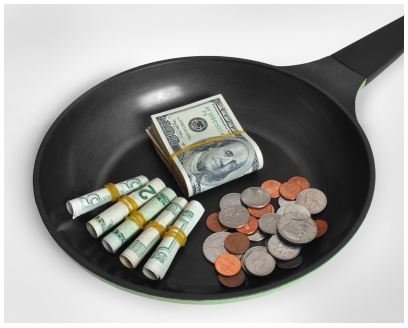The Advantages and Disadvantages of Using Cash Budgeting
Advantages
The advantages of using cash budgeting are many. This tool helps determine whether cash balances remain sufficient to fulfill regular obligations and whether minimum liquidity and cash balance requirements stipulated by banks or internal company regulations are maintained. It also helps a company determine whether too much cash is retained that could be otherwise used in productive activities. Companies that borrow from banks need to monitor their cash coverage ratio and preparing a cash budget constitutes the first step in calculating this ratio.
Cash budgets identify the amount of cash required to fulfill immediate, short-term obligations without utilization of overdraft protection or lines of credit. Businesses use this information to determine the extent of credit sales. Offering credit and extending credit periods usually increases sales. A company with excess cash can afford to sell on credit and thereby boost profitability. Conversely, a company hard-pressed for cash might decide to sell products at discounted prices for cash. Offering such discounts may be cheaper than the cost of overdraft fees or credit interest.
Companies use cash budgets to make plans for optimal utilization of cash. The goal is to retain only the minimum required working capital, investing the surplus cash in productive ventures, such as making profitable investments, expanding production capacity, purchasing raw materials in bulk and in using cash to obtain favorable discounts. Companies hard-pressed for cash can take many steps to improve their position, such as reducing credit sales, postponing or reducing dividends, collecting credit early, rescheduling debt repayment and other payouts, cutting back on manufacturing products that require resources but do not yield much cash in the short term, and so on. Companies also look at a cash budget to determine the extent of cash available, if any, to finance capital expenditures.
Preparing a cash budget sheds light on where cash goes. Individuals and companies can analyze each item of expenditure to determine the purpose of such expenditure and the value received in return for the expense. This allows them to cut down on unproductive expenses, bring in financial efficiency, and improve the quality of financial decisions.
Disadvantages
Cash budgets may also cause distortions. Cash inflows do not equate to profit. Cash inflows resulting from security deposits, fines, the sale of capital assets, or any other one-off, non-sustainable activity do not necessarily represent reliable ongoing sources of revenue. On the other hand, reduced cash flow need not always be a cause for concern. At times, selling items with long credit periods might result in a much larger profit in the long run and will more than cover the interest associated with securing short-term loans to meet immediate obligations. Managerial judgment is necessary to interpret the results.
Cash budgets are susceptible to manipulation. For instance, making a huge payout a day or two before the end of period, instead of a day or two after the start of the next period, may be misleading. It restricts cash flow for one period and inflates cash flow for the other period. Even if company operations are experiencing a loss, postponing payouts might show a positive cash flow. Similarly, making payments early might result in negative cash flows, even when operations remain profitable.
A bigger disadvantage is the reliance on estimates. Cash budgets use cash flow one year to allocate cash for the next year, when there is no guarantee that cash flow levels, or revenue and expenditure levels, will remain the same. Moreover, with cash budgets, management commits funds for various projects and expenditures and there is little opportunity to reallocate the funds based on changed circumstances, unless management decides to revise the budget as a whole.
At times, non-financial factors have a major impact in decisions. For instance, a product might not generate much cash flow, or generate negative cash flow. People, however, might have a favorable association with the product, and equate the product with the company, providing intangible value. Making decisions based solely on a cash budget would leave this product as a prime candidate for the chopping block. Similarly, one bank may charge a slightly higher rate of interest, but also offer better customer service than a bank that charges low interest. With a cash budget, only the low interest rate counts.
The advantages of cash budgeting make them an indispensible financial tool. Use and prepare them properly to experience the benefits, but understand the possibilities for distortion and other limitations too.
Reference
- Pacific Lutheran University. “Cash Budget.” https://www.plu.edu/~mgtacctg/cash_budget.htm. Retrieved June 14, 2011.
- Investopedia. “Cash Budget.” https://www.investopedia.com/terms/c/cashbudget.asp. Retrieved June 14, 2011.
Image Credit: freedigitalphotos.net/Boaz Yiftach
